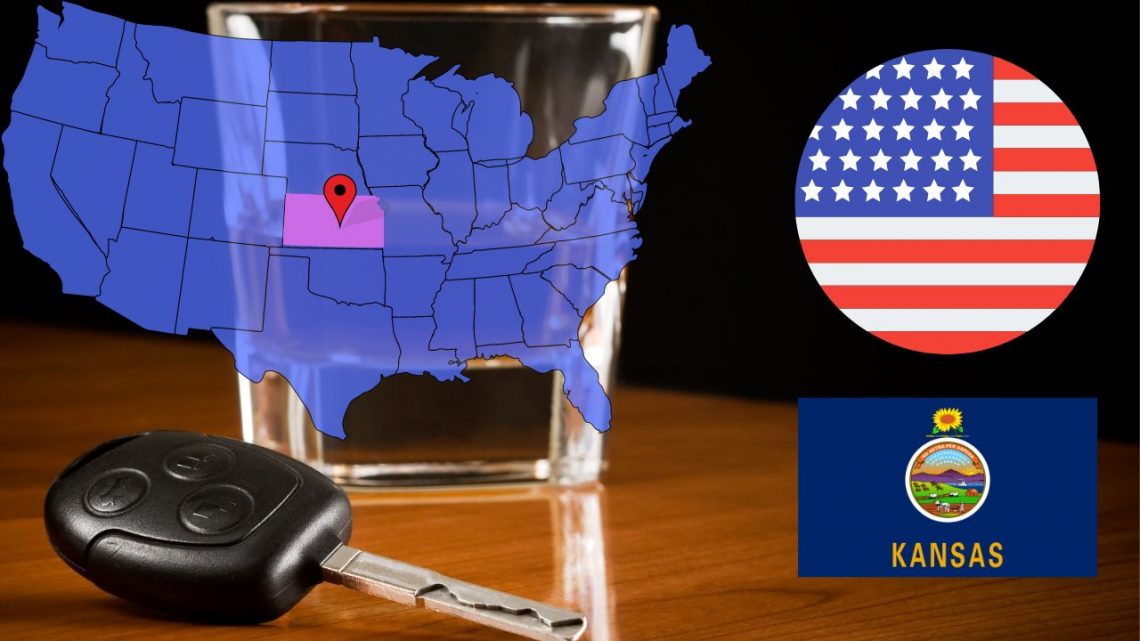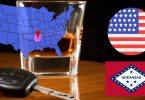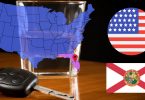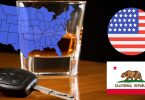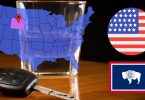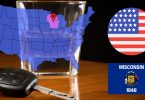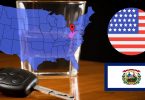In Kansas, legislation mandates that the legal limit for blood alcohol content (BAC) is set at 0.08%, equivalent to 80 milligrams of alcohol per 100 milliliters of blood.
Before we discuss impaired driving further, please be aware that this article was written to inform readers about Kansas’s drunk driving rules and regulations. This post does not intend to endorse or promote drunk driving.
What is the legal alcohol limit for driving in Kansas?
In Kansas, the legal alcohol limit for driving varies based on the driver’s category to ensure safety on the roads. The state has established specific blood alcohol content (BAC) limits to reduce the risks associated with drunk driving. Here are the legal limits for each category of drivers:
- Regular Drivers: The legal BAC limit is 0.08%. This applies to most drivers operating personal vehicles.
- Commercial Drivers: Individuals holding a commercial driver’s license are subject to a lower BAC limit of 0.04%, reflecting the higher safety standards required for commercial vehicle operation.
- Minors (Under 21): Kansas enforces a zero-tolerance policy for underage drinking and driving. It is illegal for minors to drive with any detectable amount of alcohol in their system.
Drink and Drive Penalties and Punishments in Kansas
In Kansas, the consequences of driving under the influence (DUI) are severe and vary depending on the number of offenses. The state’s laws are designed to deter DUI offenses by imposing strict penalties and punishments. Below is a summary of the penalties for DUI offenses in Kansas. It is crucial for drivers to be aware of these laws and adhere to them to avoid legal repercussions. Additionally, laws and penalties can change, so it is advisable to frequently check the official state’s website for the most up-to-date information.
First Offense (Class B, nonperson misdemeanor):
- Minimum of 48 consecutive hours to a maximum of six months’ imprisonment or, at the court’s discretion, 100 hours of public service.
- Fine of not less than $750 and not more than $1,000.
Second Offense (Class A, nonperson misdemeanor):
- Minimum of 90 days to a maximum of one year’s imprisonment and a fine of not less than $1,250 and not more than $1,750.
- At least 120 hours of confinement as a probation condition, with specific conditions regarding work release and house arrest programs.
Third Offense (Class A, nonperson misdemeanor or severity level 6, nonperson felony):
- Same as the second offense, with enhanced penalties if the third conviction occurs within ten years of a prior conviction, including mandatory confinement conditions.
Fourth or Subsequent Offense (Severity level 6, nonperson felony):
- At least 30 days of confinement with conditions similar to the third offense, focusing on imprisonment, work release programs, or house arrest programs.
Additional Considerations:
- Sentences may include substance abuse treatment programs.
- Enhanced penalties for those with passengers under 18 years of age at the time of the offense.
- Requirements for alcohol and drug evaluation and adherence to treatment recommendations.
- Community service as an alternative to fines, with specific credit for hours served.
Probation and Supervision:
- Mandatory supervision period after imprisonment, with a focus on substance use disorder services and potential for supervision revocation upon violation.
This overview highlights the structured approach Kansas takes towards penalizing DUI offenses, emphasizing rehabilitation and strict penalties to curb drunk driving. Remember, driving responsibly and within the law is not just about avoiding penalties; it’s about ensuring the safety of all road users.
How Can I Calculate If My Alcohol Blood Limit Is Legal in Kansas?
In Kansas, law enforcement determines if a driver is over the legal blood alcohol content (BAC) limit primarily through the use of breathalyzer tests and blood tests. These methods are scientifically validated and are considered reliable indicators of a person’s level of intoxication.
For those concerned about their BAC levels and aiming to ensure they stay within legal limits, there are practical steps you can take to estimate your BAC before deciding to drive. While none of these methods can guarantee absolute accuracy, they can provide a useful estimate that might help you make safer choices. As an experienced phlebologist with a decade of expertise, I recommend the following methods:
- Use a High-Quality Alcohol Breathalyzer: One of the most effective tools for estimating your BAC is a high-quality alcohol breathalyzer. Based on professional experience, the BACtrack S80 is an excellent choice available in Kansas. It is known for its professional-grade accuracy and has endorsements from DOT & NHTSA, along with FDA 510(k) clearance. Carrying a device like the BACtrack S80 in your vehicle is a practical recommendation. It can offer a reliable estimate of your BAC, helping you understand when you might be too impaired to drive. This awareness is crucial, as it’s common for individuals to misjudge their level of intoxication.
- Utilize a BAC Calculator: Another resource I recommend is a BAC calculator that I developed in collaboration with other phlebologists and web developers. This online tool is designed to estimate your BAC based on factors such as the amount of alcohol consumed, your weight, and the time elapsed since drinking. While it’s a useful resource, it’s important to remember that factors like metabolism, medication, and health conditions can influence your actual BAC and are not accounted for in standard calculations.
It’s essential to understand that both these methods—using a breathalyzer and a BAC calculator—provide estimates rather than precise measurements. While they can help you make more informed decisions, they are not infallible. The safest approach is always to avoid driving if you have consumed alcohol or if there’s any doubt about your sobriety.
Remember, the goal of these tools is to support safer driving practices. By using them responsibly, you can help protect yourself and others on the road. However, the best policy is not to drink and drive at all, ensuring you remain well within the legal and safe limits for operating a vehicle.
Ways to Avoid Driving with a High BAC in Kansas
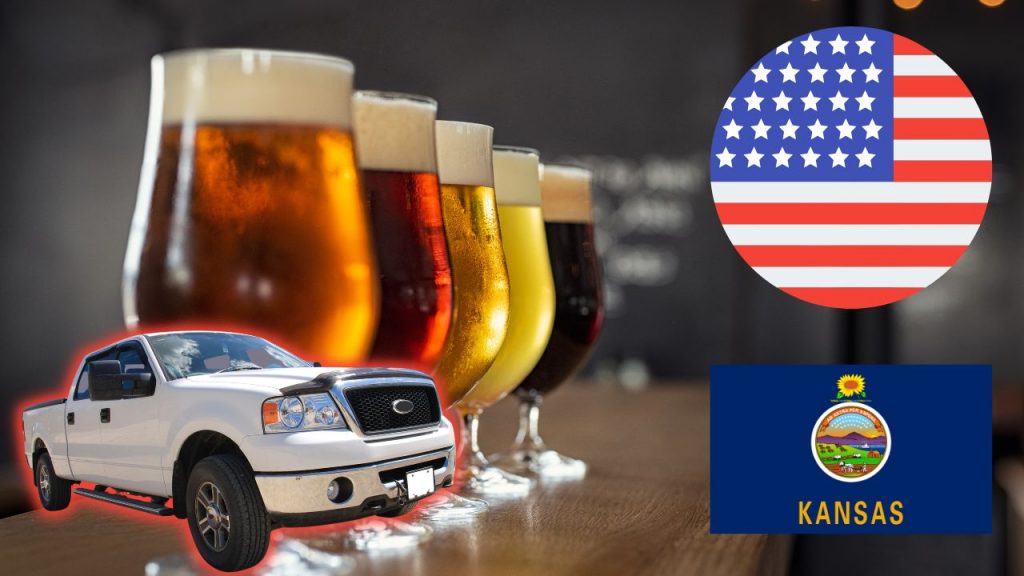
Driving with a high blood alcohol content (BAC) not only risks your safety but also that of others on the road. Fortunately, there are reliable alternatives to ensure you get home safely without driving under the influence in Kansas. Here are some recommendations:
- Utilize Ride-Sharing Apps and Local Taxi Services: One of the most convenient and readily available options is to use ride-sharing apps like Uber or Lyft. These services provide a safe and affordable way to get home without the need to drive. Additionally, supporting local taxi companies is another great way to travel safely. In Wichita, you can rely on services like Best Cabs Inc., while in Kansas City, Local Budget Cab Co offers reliable transportation. These companies provide a vital service, ensuring that you can find a ride home at any hour.
- Order a Designated Driver Service: If you’ve driven to a location and then find yourself unable to safely drive back due to alcohol consumption, a designated driver service is an excellent solution. This service involves professionals who can drive you home in your own vehicle, ensuring both you and your car arrive safely. In Wichita, K&K’s Designated Drivers is a good choice, while in Kansas City, LEADER Worldwide Chauffeured Services can provide a similar service. To find a designated driver service near you, a simple Google search for “designated driver service” along with your city name should yield relevant results.
These options not only provide a safe alternative to driving under the influence but also promote responsible drinking practices. By planning ahead and choosing a safe way to get home, you’re contributing to the safety and well-being of the entire community. Always remember, the best plan is to decide on your ride home before you start drinking, ensuring you won’t be making impaired decisions later in the night.
Sticking to DUI Laws in Kansas: Sad Statistics
Driving under the influence of alcohol or drugs is illegal in Kansas. In 2020, Kansas saw 426 fatal accidents involving drunk drivers, with 23% of these involving drivers exceeding the 0.08% BAC legal limit. The state strictly enforces DUI laws to prevent such incidents. Before driving, ensure your BAC is within legal limits. If drinking, opt for alternatives like a designated driver, Uber, or a taxi.
Stay informed on DUI laws by checking Kansas’s official website. Remember, even small amounts of alcohol can impair driving abilities. To ensure safety, use a certified breathalyzer to check your BAC if you’ve consumed alcohol. Regularly reviewing Kansas’s DUI regulations online is recommended for all drivers.

